Overview
Court Ladies Playing Backgammon Scroll (《內人雙陸圖卷》), attributed to the Tang Dynasty painter Zhou Fang (周昉, c. 8th–9th century), depicts aristocratic women engaged in a game of double-sixes (shuanglu), a board game of Indian origin popularized in China during the Tang era. The original scroll is lost, but two surviving Song Dynasty copies are housed in the Freer Gallery of Art (USA) and the National Palace Museum (Taipei).
Key Details
- Artistic Style
- The scroll exemplifies Zhou Fang’s “Zhou’s style” (周家樣), characterized by full-bodied, elegant figures with refined facial features and luxurious attire.
- The Freer version (30.5 cm × 69.1 cm) features vibrant colors and meticulous details, though critics note slight stiffness in brushwork compared to the original.
- The Taipei version is praised for its delicate lines and richer palette, likely copied later in the Song era.
- Composition
- Eight figures are depicted: two noblewomen playing shuanglu, two observers, and four servants preparing refreshments.
- The scene reflects Tang aristocratic leisure, with symbolic elements like crescent-shaped stools (月牙凳) and intricate hairpins (月牙梳), embodying Tang aesthetic preferences.
- Cultural Context
- Double-sixes (shuanglu): Introduced from India via the Silk Road, the game involved dice-rolling and strategic movement of pieces on a board with 12 lanes.
- Zhou Fang’s portrayal captures the social hierarchy of Tang court life, contrasting the relaxed postures of nobles with the busyness of servants.
- Historical Legacy
- Zhou Fang’s works, including this scroll, influenced later “water-moon Guanyin” (水月觀音) depictions and solidified his status as a master of Tang realism.
- The scroll’s colophons include inscriptions by Qian Xuan (錢選) and Lu Shidao (陸師道), who praised its lifelike details and technical brilliance.
Notable Features
- Furniture: The crescent stool (月牙凳), a Tang innovation for elite women, features carved floral legs and a woven bamboo seat, showcasing period craftsmanship.
- Attire: Noblewomen wear flowing robes and elaborate hairstyles, while servants are depicted in simpler garments, emphasizing class distinctions.
Legacy
The scroll remains a critical artifact for studying Tang Dynasty art, gaming culture, and gender roles, bridging historical documentation and artistic mastery

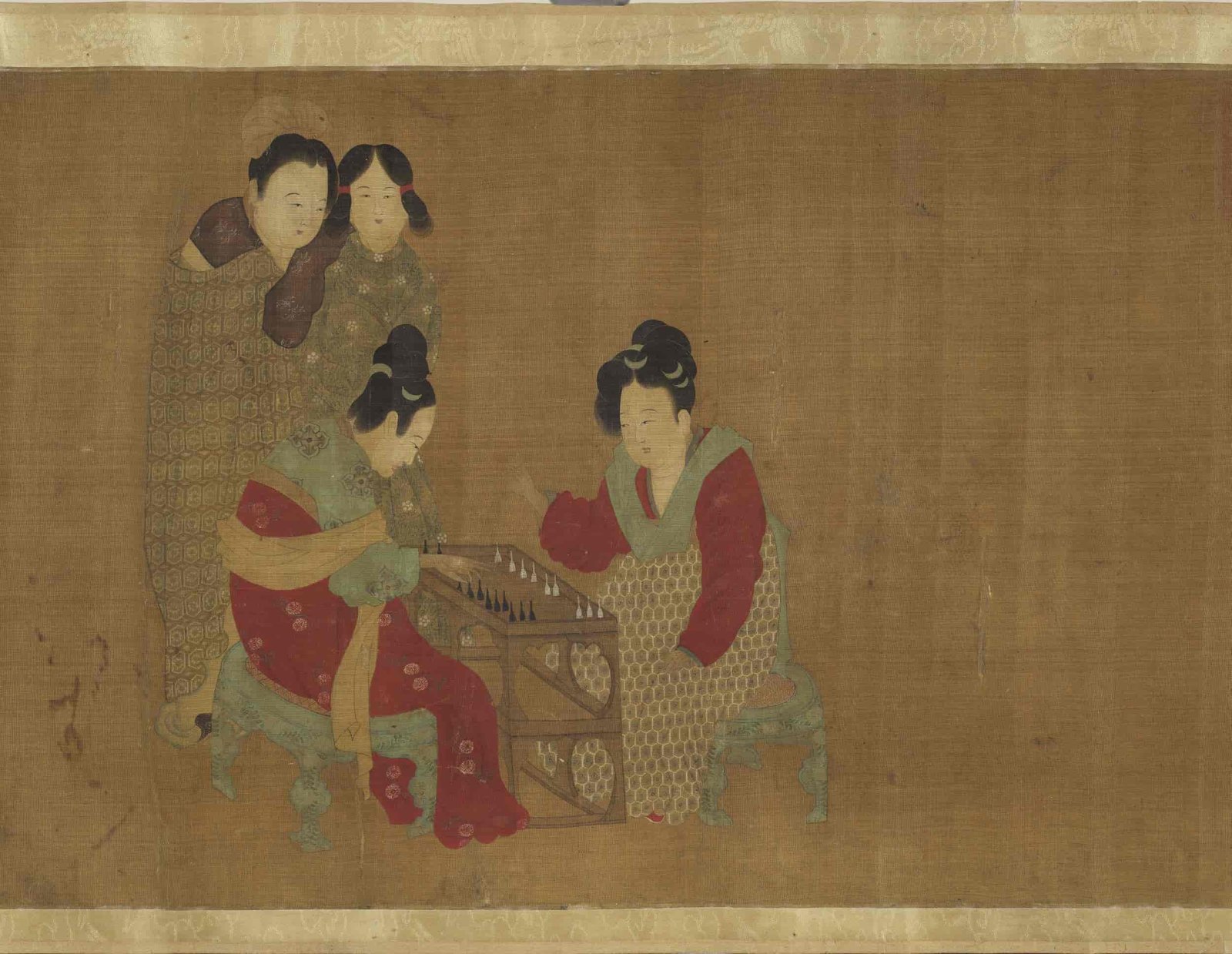
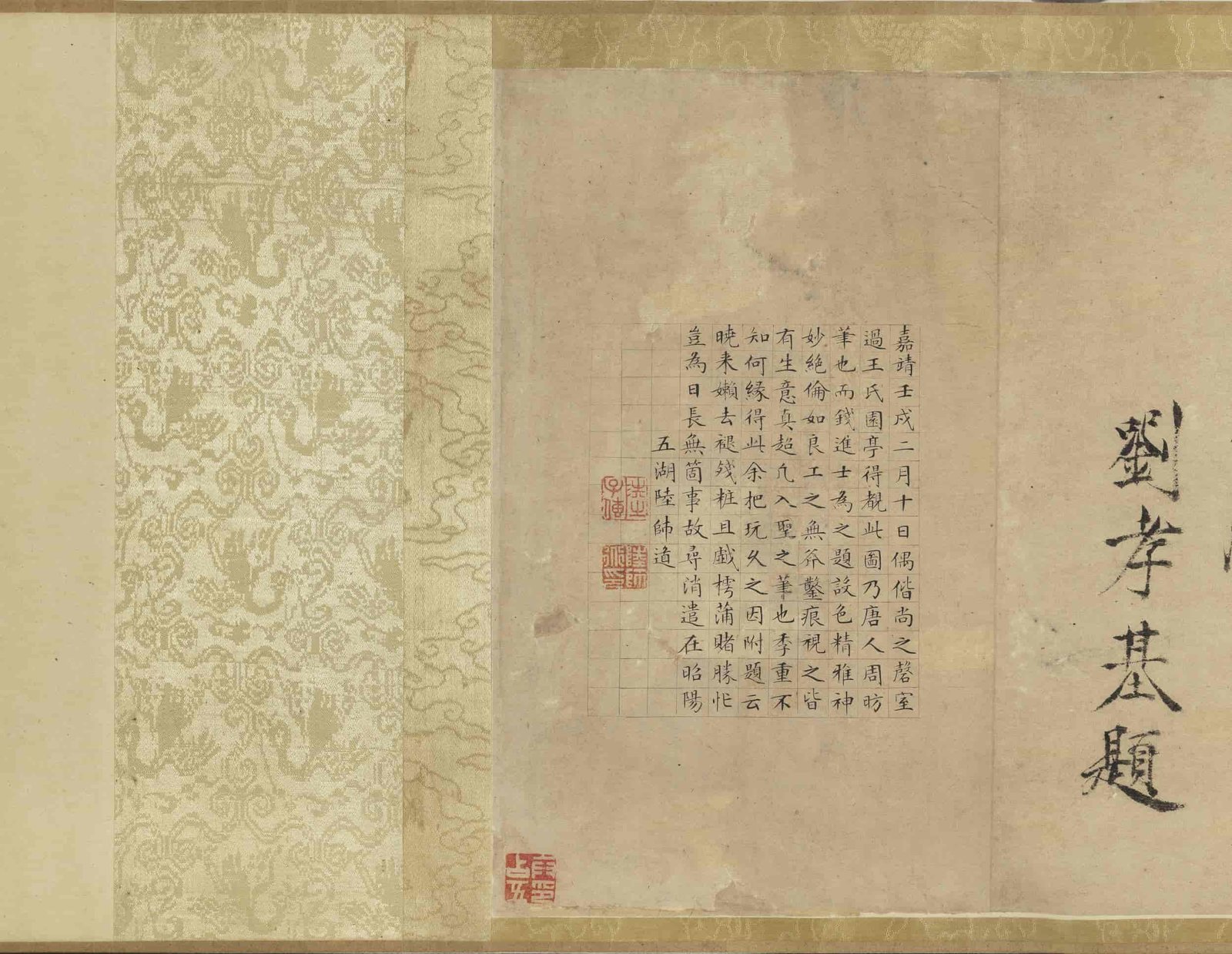
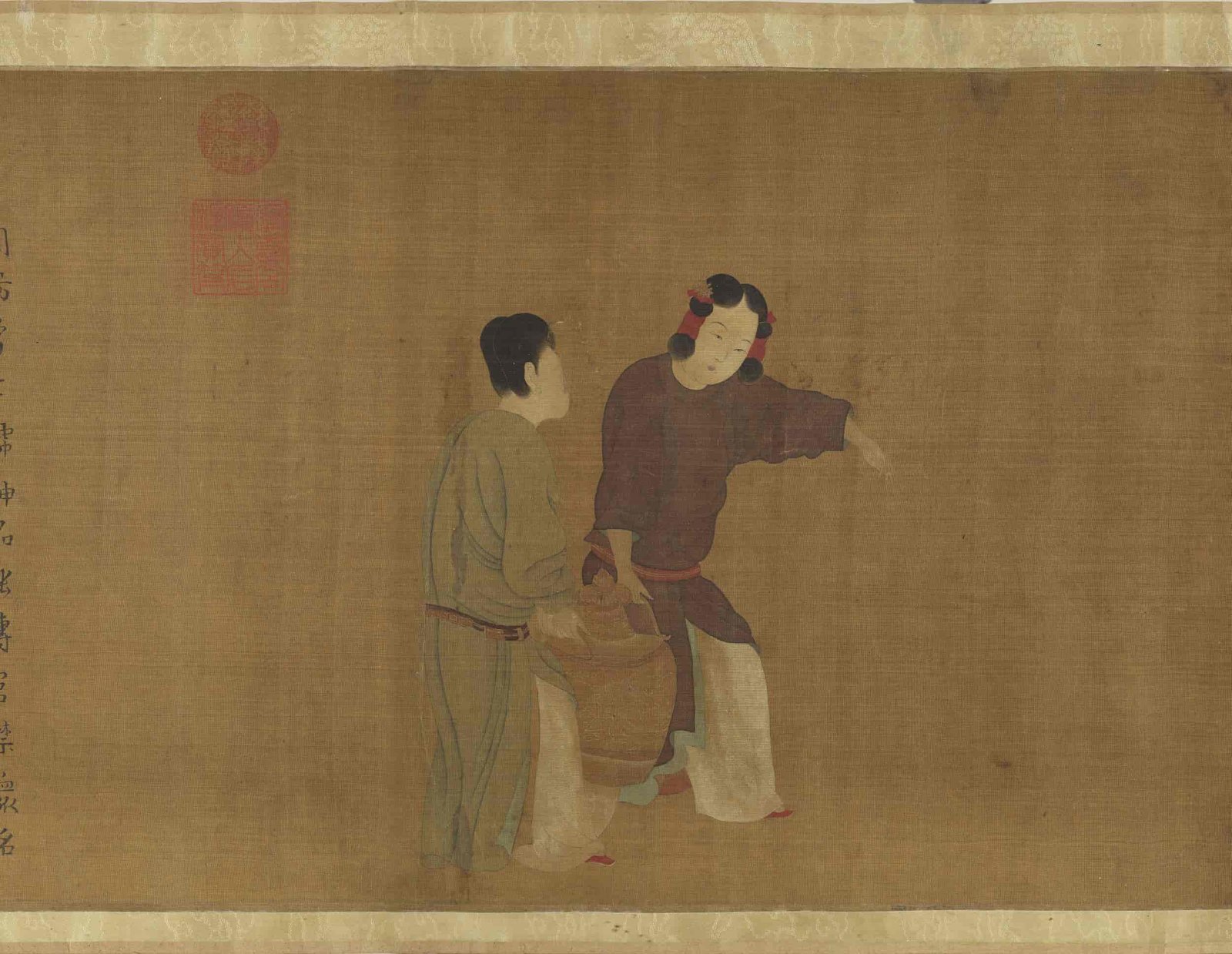
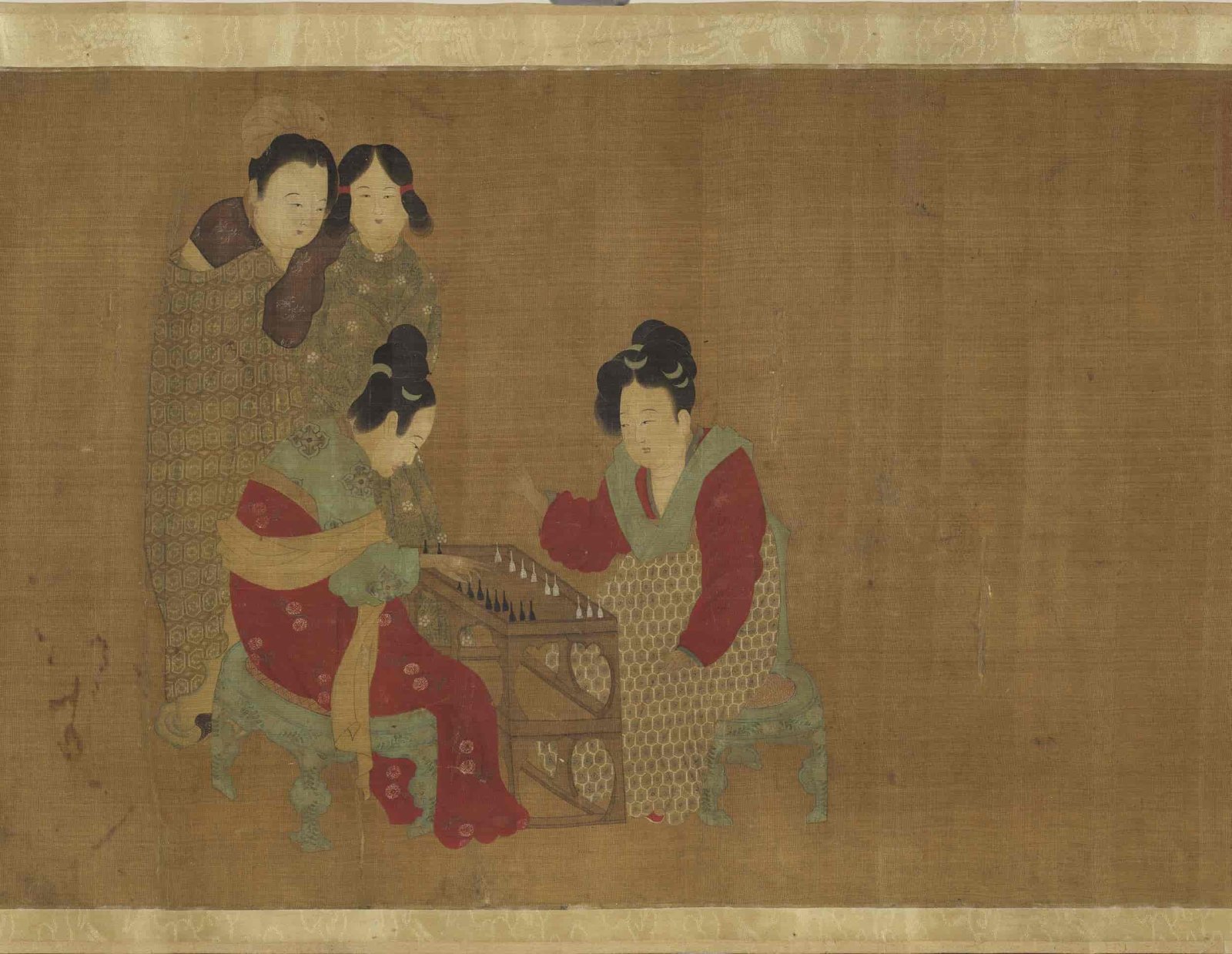
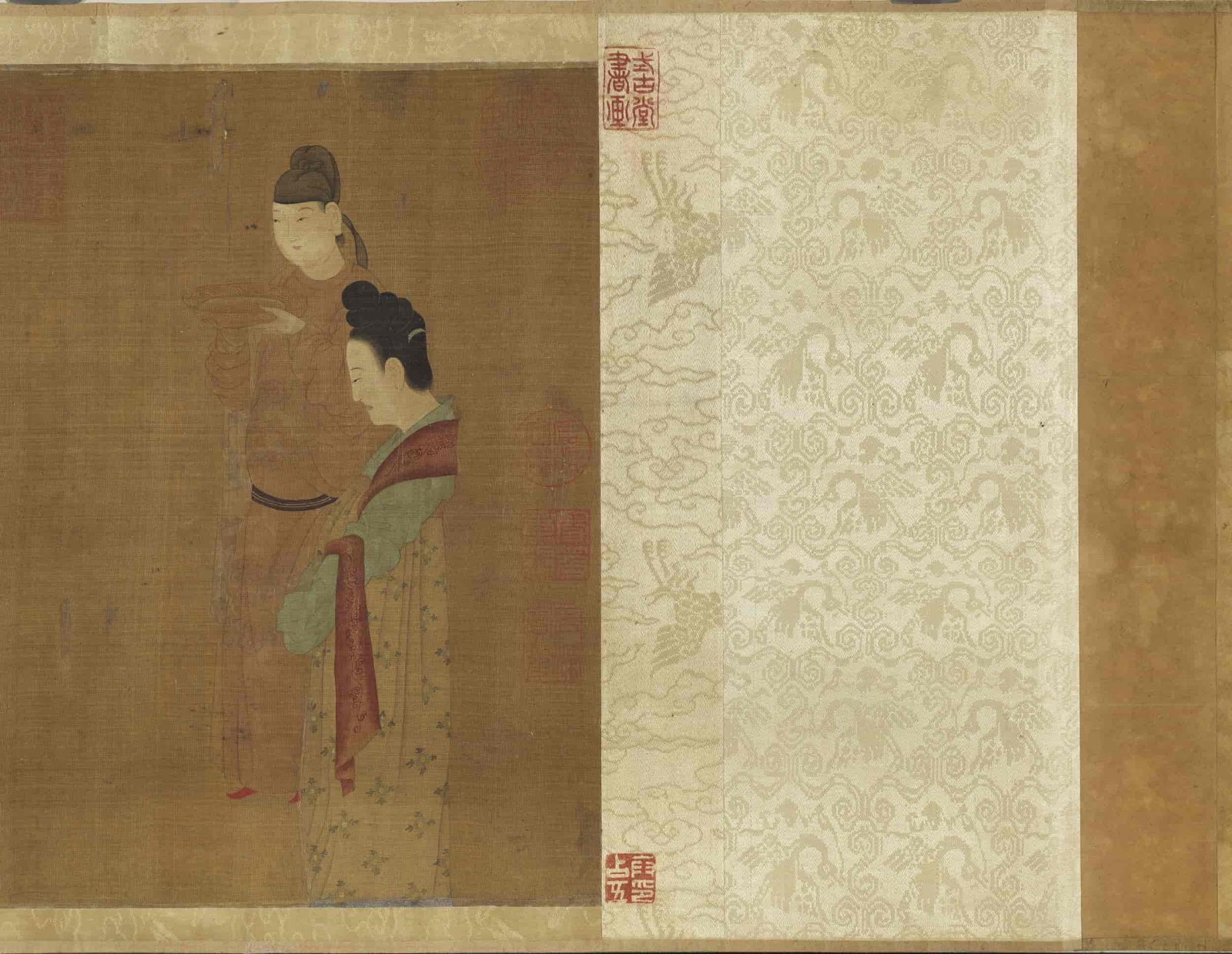
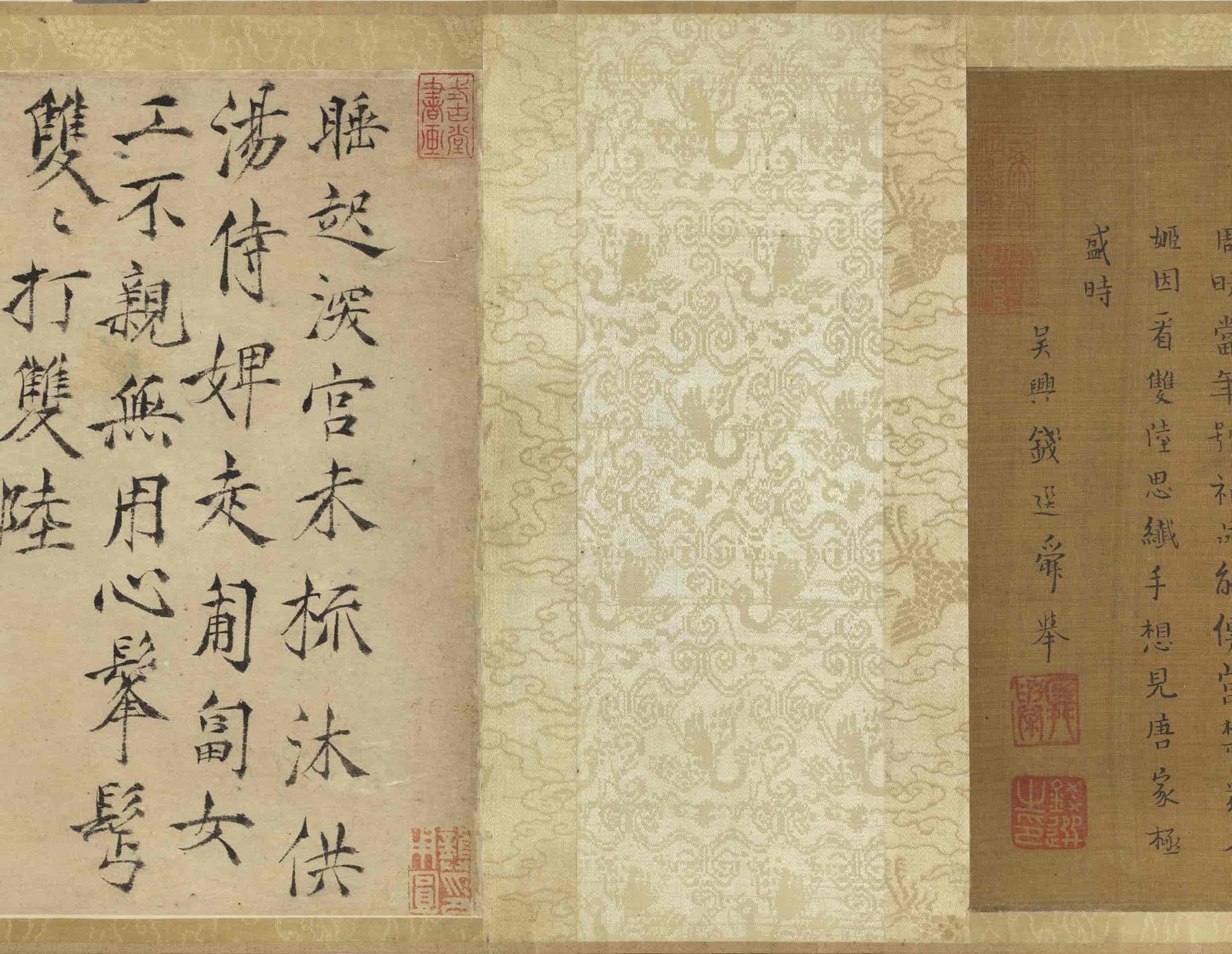
评价
目前还没有评价